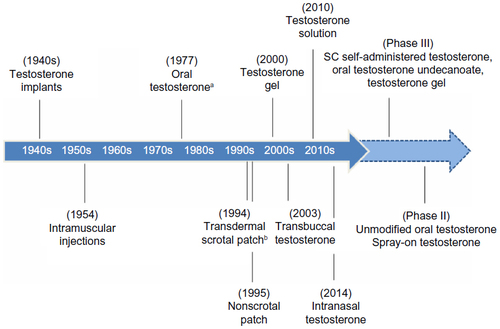Figures & data
Figure 1 History of testosterone therapy.
Abbreviation: SC, subcutaneous.

Figure 2 Clinically significant effects of testosterone replacement.
Abbreviations: ↑, increased; ↓, decreased; HDL, high-density lipoprotein; PSA, prostate-specific antigen.

Table 1 Testosterone therapies by formulation/route
Table 2 Emerging testosterone therapies
Table 3 Potential cardiovascular risks and benefits of testosterone
